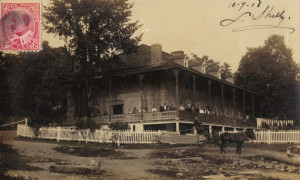A Community and a Salmon River
The Cascapedia River begins as two fast flowing streams high in the Shick Shock Mountains. The river born of these two branches flows over a series of falls and through narrow, rocky passages, and continues on through the broad valley of Cascapedia-St. Jules. It flows over a distance of 139 kilometres (87 miles) before emptying into the Bay of Chaleurs.
